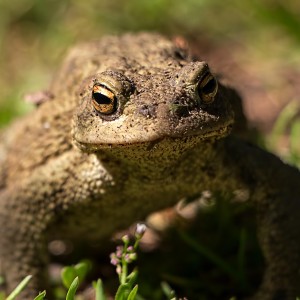Hello fellow readers, “They’ve been around since before the dinosaurs, and few people get angry at frogs,” said Tedor Whitman, Executive Director of the Cora Hartshorn Arboretum (CHA) in Short Hills NJ, during a Frog Watch USA training I was blessed to attend. Cleverly held on Leap Day 2016, Greenwood Gardens, also in Short Hills, hosted the event.
Tedor explained that he started the local chapter to inspire others to help train and monitor Frog Watch USA volunteers because our area has no prominent zoos. Frog Watch USA is a citizen science program of the Association of Zoos and Aquariums that has organized volunteers to monitor frog populations since 1998.
“Few people get angry at frogs.”
Tedor joked frogs and toads might not be as famous as the “charismatic mega vertebrates” like the panda or humpback whale. However, there’s been a considerable decline in amphibians in the last twenty years due to habitat loss, pollutants, climate change, parasites, and disease, which is a cause of great concern.
Frogs and toads are essential for pest control and as a food source for other animals. They are extremely sensitive to environmental change; hence, changes in their populations can be early indicators of ecological problems.
“Counting me will help you!”
The Frog & Toad Field Guide provided during training lists sixteen species, about ten of which live in our neck of the woods (northern NJ), from what I could tell, though I’m not an expert. And you don’t need to be to become a Frog Watch USA volunteer. All it takes is a few hours of training to learn how to choose a wetland site, listen for just three minutes a minimum of four times a year, and record your findings.
There’s a CD available to help memorize their mating songs before getting started. That’s not hard. Think of how many tunes and lyrics you know by heart. What are ten more amphibian songs to add to your favorites?
While volunteering is not a significant time commitment, the valuable data will help save our wetlands, which are critical for erosion & flood control and natural water filtration. Not to mention the threatened species that rely on wetlands, such as our essential and adorable frogs and toads.
Do you know the difference between Frogs and Toads?
I learned frogs have teeth; toads don’t. Frogs live in or near water; toads live on land. Frogs have smooth, slimy skin; toads have warty, dry skin. To learn more about volunteering, visit Frogwatch.org. It’s simple and fun, and you can make a difference.
Garden dilemmas? AskMaryStone@gmail.com (and on your favorite Podcast App).
Column updated 2/29/24
You’ll enjoy a column featuring my special garden guest in Healing in the Garden of Life.
Helpful links:
This story is featured in the Garden Dilemmas Podcast:



